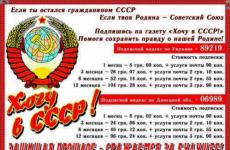The Board of Oleg in Russia 882 912. The life of the prince of Oleg. Hike to Tsargrad.
Board of Prince Oleg (briefly)
Prince Oleg Board - Short Description
Chronology of the Board of Prince Oleg 882-912
In 879, after the death of Rurik, the Novgorod Prince becomes his relative Oleg (this happened because of the youngsters of Igor, the son of Rurik). The new prince was very militant and enterprising. As soon as he climbed the princely throne, he put the goal to capture the waterway to Greece. However, for this it was necessary to conquer all the Slavic tribes living along the flow of Dnieper.
Since in order to achieve, the goals set by one squad was not enough, Oleg collects the army from the Finnish tribes, as well as the curvice and Ilmensky Slavs, after which he put forward south. On his way, he subordinates Smolensk, love (there he leaves part of the warriors), and then goes to Kiev.
At that time, Askold and Dir, not belonging to the princely race, were ruled in Kiev. Oleg lured the cunning of them from the city and gave the order to kill them. After that, the Kiev residents gave up without a fight, Oleg took the place of the Great Kiev Prince, and the city himself proclaimed the "Mother of Russian cities".
The new Kiev Prince conducted large-scale work on strengthening the buildings of the city, which was responsible for his defense, and also held several successful military campaigns in 883-885, thus expanding the land, subject to Kiev. In addition, Oleg subjugated radiramics, northerners and arms. In the conquered lands he erected the fortress and cities.
Domestic policy of the reign of Prince Oleg
Internal policy with Oleg It was reduced to the collection of Dani from the conquered tribes (in fact, remained the same as with other ruler). Tribute was fixed throughout the state territory.
Foreign Policy of the time of the reign of Prince Oleg
907 was marked for Prince Oleg and Russia a very successful campaign for Byzantium. Frightened by the huge troops and getting on the trick of Oleg (the ships were put on the wheels and walked on the ground), the Greeks were offered the prince of Kiev a huge tribute, which he accepted on the condition that Byzantium will provide Russian merchants. Five years later, Oleg signed a peace treaty with the Greeks.
After this campaign, the princes began to make legends, attributing to him supernatural abilities and ownership of magic. From the same time, the people of Prince Oleg began to call the prophet.
Duke died in 912. According to the giving, Oleg once asked the reason for the cause of his death and he answered him that the prince would die from his faithful beloved horse. After that, Oleg gave a horse to the stable, where he was cared to death. Having learned about the death of the horse, the prince came to his bones to the mountain to say goodbye to the right friend, where he was bited in the foot of the serpent from the horse skirt.

According to some historical evidence, it is believed that the prince of Oleg was a relative of Rüric, or rather the brother of Rurik Efanda's wife, who was a Norwegian princess. The exact date of his birth is unknown.
Power to Oleg has moved after the death of Rurik as a regent of his young son Igor.
Kiev Prince
At the young care, Igor Oleg began to hold an active inner and foreign policy. In the "Tale of Bygone Years" it is said that in 882, Oleg with a large army captured Smolensk and Lyubek, planted his governors and moved to Kiev, where Varyagi Askold and Dir were reigning, which, in fact, usurp the power. He deceived him to lure them out of the city and kill. Kiev Oleg liked, and he made it the capital of the ancient Russian state. The new power quickly recognized the Slavic tribes, including Poland, Northerners, Drevlyan, Ilmenie Slovenia, Curvichi, Vännychi, Radmichi, Oitrioli and Tivers. Oleg organized the structure of the state in such a way that local princes and governors helped in managing the territories.
In the future, he continued to expand the state at the expense of nearby territories. Under the power of the Kiev Prince in 883, the lands of Drevlyan were departed, in the 884th - Northerners and 885-M radar.
Camping prince
It is impossible not to take into account the success of Oleg and in foreign policy. A special place is occupied by the fight against the Khazar Kaganat, which terrorized the East Slavic lands, collecting tribute to them. Oleg managed to protect his subjects from their raids. The chronicle leads his words addressed to Northerners: "I am an enemy of the Khazaras, so you have no reason to pay them a tribute."
A special place in the chronicles occupies the legendary campaign of Oleg on Byzantium. In 907, he has equipped a large army, and in 2000, it moved to Kinggrad (Constantinople). Byzantines did not expect such an onslaught and did everything to protect the city, including the chains overlap the harbor. Unexpected action of Oleg scared Byzantines: he put all his rooks on the wheels and with passing wind, moved to the city on all the sails. The courage of the city takes: this was enough so that the Greeks suggested Oleg World and Dan.
The Russian army received 12 hryvnia for each ride (adaptation in board the boat to stop the oars when rowing), and in the future, Byzantium was supposed to pay tribute to Russian cities. The main outcome of the world was the contract on the duty-free trade of Russia in Byzantium. Legends say that Oleg, noting the victory, nits his shield on the gate of Tsargrad.
Some historians cast doubt on this campaign, calling him a legend. Nevertheless, the "Tale of Bygone Years", in the description of the campaign of Igor Rurikovich in 944, reports the words of the Byzantine king to the prince Igor: "Do not go, but take tribute to what Oleg took, I will add it to that Dani."
In the same chronicles, its nickname is properly, which corresponds to a knowledgeable future predictable it. So Oleg began to call immediately on returning from the campaign to Byzantium 907.
Legends about the mean Oleg
Contradictive evidence of the circumstances of the death of Oleg. "The Tale of Bygone Years" reports that his death was preceded by heavenly sign - the appearance of the "star Great in the West with a penny way."
There are other versions, but everywhere there is a legend of death from the snake bite. According to legend, Magi predicted Oleg death from his beloved horse. About Kone Prince remembered only a few years after his death. Oleg laughed at Walking, came to the death of the horse, got up on the skull and said: "Do I fear him?" However, a poisonous snake lived in the skull, a deadly tasty prince.
The death date of Oleg, as well as all the chronicle dates of Russian history until the end of the century, is conditional. Nevertheless, the most preferred date is 912.
Oleg Novgorodsky is usually beginning to deduct the formation of ancient Russian power. The figure is really a sign, because I defined the beginning of a new era, a new era. His life, like death, has many mysteries for historians. But still the prince of Oleg is prophetic, the brief biography of which will be discussed below, is a person quite interesting for researchers and ordinary lovers of antiquity.
Appearance in Russia
The biography of which we are known only briefly, is considered the founder of the ancient Russian state. He was a relative of the legendary Varyag Rurik, that is, the brother Efanda was a commander's wife. There is an opinion that he was an ordinary governor, to whom Viking immensely trusted. Otherwise, would he commit him to take his young son? It should be assumed that Oleg acted under the agreement with Rurik, and maybe he had certain freedom. One way or another, but rather quickly he seized Smolensk and love, and then Kiev. By the way, the Zlatovochiy city was captured by a cunning: Varyag smeared because of the walls (which were also probably wiking) and killed them, declaring himself a prince.

Achievements and successes
Prince Oleg, whose biography is considered in this article, strengthened the power whether the tribes of the Slavs neighboring with Kiev, whether to conquer them. He installed a tribute for them, which is not strongly in humans. But his military successes were really impressive. Hiking vs. Khazar saved Russian lands from the need to pay Kaganat the Foul. The great Tsargrad fell on the gates of which, according to the chronicle, the prince nailed his shield. As a result, Russian merchants could trade without duties with Byzantia, receive all sorts of support from it. Thus, the prince Oleg is prophetic, the brief biography of which is considered above, has more merit to Russia than Rurik. Moreover, there is almost nothing to know about the prince of dynasty.
Hike to Tsargrad.
Prince Oleg, the brief biography of which is covered in the story of the time of age, is an outstanding personality. He organized a famous campaign to Constantinople, after which he got his nickname - prophetic. The chronicle states that he sent a huge army on two thousand rooks to the city. Each boat was placed four tent of the warriors. The emperor ordered to close the gate of the capital, leaving the suburbs and villages on the enemies. But the Kiev prince ordered to attach the wheels to the ships, on which the army came to the gate of Tsargrad. Byzantines were in bewilderment, therefore surrendered, offering Oleg generous tribute and peace.

And was there a goal?
Prince Oleg, whose short biography There is practically in every textbook of history, - the figure is contrary to. Researchers have more questions than answers about his life. For example, the fact of the campaign on Byzantium seems unreliable. All because the authors from Constantinople described in detail all attacks on their country, but they do not mention the campaign. In addition, the return from Tsargrad Oleg and Vladimir the Great are very similar. Perhaps this is a description of the same event. At the same time, after Oleg, Igor went to the southern city, who also won. This is stated by European authors who led the chronicles of those years.

Was a snake?
Oleg, whose biography is also known from the lessons of literature, died just as mysteriously, as appeared in Russia. The same describes that once the welfare predicted him death from his beloved horse. Varyag was superstitious, so I sat on another animal, and the favorite instructed the servants, ordering to take care of him before his death. I remembered the ruler about him during the pyr, but it turned out that the horse had long died. Cooking a pet and angry, which believed the wise, the prince went to the bones. But when he came to the skull, I saw a snake, which immediately stung him in the leg. Oleg died from poison.

Prince Oleg, whose biography has long been studied, he could perish another death. And the tale of the horse and the snake may be borrowed from Saga about Orvard Odde. Although some scientists believe that the hero of the Scandinavian legends and the prophetic Oleg are the same face. But there are several facts that make it possible to think about whether the plot about the death of the prince is true. Among them are the following:
Could the snake contact the leather boot, which was worn in Russia? Most likely, no, or Oleg came to the hill to the bones of the horse bare?
And what if the snake jumped and bites the prince above the shining boot? But on the territory of Ukraine in such viper there is no!
As a rule, the snake before the horrid, hits and is trying to wage. Could this not notice Oleg or his close?
As an option, the prince died from poison, but the snake hit him on purpose or poisoned Oleg in advance. Set where the truth, unfortunately, is impossible.

A few more interesting facts
Russian Prince Oleg, whose biography is already known to the reader, is mentioned not only in the chronicles of Kiev and Novgorod. Al-Masidi (Arabic author) talks about the unsuccessful campaign of Rus (500 ships!) On the chel with Olang and Al-Dir to Persia. Part of the production was given to Khazaras, but the latter betrayed them and killed everyone. About thirty thousandwriters died there, and who retreated for the Caspian, were interrupted by Volzhsky Bulgarians. Thus, the legendary prince died in a campaign, as befells brave Varana.
Here is such a smart and warlike prince Oleg. His biography is full of white spots, because of which a halo of mysteriousness and mysteriousness remains around this figure. Perhaps the time will find answers to all questions.
Prince Oleg Kievsky, Oleg Probe, Prince Novgorod and so on. Oleg - one of the first famous Russian princes was a lot of nickname. And each of them was given to him justified.
The most interesting thing in the study of the biography of people who lived so long ago, this is what we never can find out how it really was. And this concerns absolutely any facts, even names and nicknames.
Nevertheless, in the history of our country there is a certain number of documents, chronicles and other papers written in which many historians, for some reason, believe.
I suggest a long time for a long time on that, there was everything really, but just to plunge into the most distant corners of the history of Russia. Let's start with the very beginning. From the origin of Prince Oleg.
Origin of Oleg
The most interesting thing is that in the Internet I found several versions of the origin of the prince of Oleg. Basic - two. The first is based on the well-known chronicle of the "Tale of Bygone Years", and the second is the Novgorod first chronicle. Novgorod chronicle describes earlier events of ancient Russia, therefore retained fragments of an earlier period of Oleg's life. Nevertheless, it contains inaccuracies in chronology on the events of the X century. However, about everything in order.
So, according to the "Tale of Bygone Years," Oleg was Rüric's tribesman. Some historians consider his brother Rurik's wife. The more accurate origin of Oleg in the "Tale of Bygone Years" is not specified. There is a hypothesis that Oleg has the Scandinavian roots and wears the name of the hero of several Norwegian-Icelandic sag.
After the founder of the founder by the Prince of Rüric dynasty (according to some sources, the true creator of the Old Russian state) in 879, Oleg began to prince in Novgorod as the guardian of the young son of Rurik Igor.
Camping Prince Oleg
Combining Kiev and Novgorod
Again, if you follow the story and then on the "Tale of Bygone Years", then in 882, Prince Oleg, taking a large army, consisting of Varyagov, Chok, Slave, Measure, All, Curved and representatives of other tribes took the city Smolensk and Lyubek, where he planted his people with governors. Further, he descended to Kiev, where two boyar rules were ruled not to the Rüric tribe, but were Varyags: Askold and Dir. Oleg did not want to fight with them, because he sent ambassadors to them with the words:
The merchants we, we are going to the Greeks from Oleg and from Igor Prince, and come to your family and to us.
Askold and Deer came ... Oleg hid some warriors in the rooks, and left others. He himself went forward, holding a young prince Igor on the hands of the young Prince. After checking the heir to Rurik, young Igor, Oleg said: "And he is the son of Rurik." And killed Askold and Dira.
Another chronicle, consisting of information from various sources of the XVI century, leads a more detailed story about this capture.
Oleg landed some of his squad ashore, who comprising a secret plan of action. Himself, having affected the patient, remained in the roaster and sent a notice to Askold and Dira that there was a lot of beads and jewelry, and also has an important conversation to the princes. When they climbed onto Ladv, Oleg killed Askold and Dira.
Prince Oleg estimated the convenient location of Kiev and moved there with a friend, declaring Kiev "Mother of Russian cities". Thus, he combined the Northern and Southern Centers of the Eastern Slavs. For this reason, Oleg, and not Rurik sometimes consider the founder of the ancient Russian state.
The next 25 years, Prince Oleg was engaged in the expansion of his power. He subjugated Kiev Tribes of Drevlyan (in 883), Northerners (in 884), Radmichi (in 885). And the Drevln and Northerners paid to give Khazar. "The Tale of Bygone Years" left the text of the appeal of Oleg to Northerners:
"I am an enemy of Khazaras, so you have no reason to pay them a tribute." To the radar: "Who gives you to give?". Those answered: "Kozaras". And he says Oleg: "Do not let the Kozar, but let me". "And owned Oleg Trevlyans, Polyans, radar, streets and tivers."
Hike Prince Oleg on Tsargrad
In 907, the projectile 2000 of the Ladi (these are such boats) of 40 warriors in each (according to the "Tale of Bygone Years"), Oleg made a campaign to Kinggrad (now - Constantinople). Byzantine Emperor Lev VI The philosopher ordered to close the gate of the city and tan the chains of the harbor, thus providing enemies the opportunity to rob and ruin only the suburbs of Constantinople. However, Oleg went to another way.
The prince ordered his warriors to make big wheels for which they put their rooks. And as soon as there was a backway wind, the sails rose and filled with air, which drove the boats to the city.
Frightened Greeks offered Oleg World and tribute. According to the Treaty, Oleg received 12 hryvnia for each warrior and ordered the Byzantium to pay tribute to Russian cities. In the appendage to this, Prince Oleg ordered to take Russian merchants and merchants in Tsargrad so nicely, as no one ever accepted. To render all the honors and provide them with the best conditions, as if he himself. Well, if these merchants and merchants begin to negone themselves, Oleg ordered them to drive them out of the city.
In the victory, Oleg nodded his shield to the gates of Tsargrad. The main result of the campaign was the trade agreement on the duty-free trade in Rus in Byzantium.
Many historians consider this campaign to fiction. There is neither a single mention of the Byzantine annals of those times, which described such trips in 860 and 941 in a sufficient detail. There are doubts about the 907 Treaty, the text of which represents almost the verbal repetition of contracts of 911 and 944.
Perhaps the hike was still, but without the siege of Tsargrad. "The Tale of Bygone Years" in the description of the campaign of Igor Rurikovich in 944 reports the "Words of the Byzantine King" to the prince Igor: "Do not go, but take tribute to what Oleg took, I will add it to that given."
In 911, Prince Oleg sent the embassy to Constantinople, which confirmed the "long-term" world and concluded a new contract. Compared with the 907 year agreement disappears the mention of duty-free trade. Oleg is referred to in the agreement "Grand Prince Russian." In the authenticity of the 911 Agreement, there is no doubt: it is supported by both linguistic analysis and references to Byzantine sources.
Death of Prince Oleg
In 912, according to the same "Tale of Bygone Years", Prince Oleg died from the bite of a snake, which cramped his dead horse from the skull. The death of Oleg has already been written a lot, so we will not stop at this for a long time. What is happening there ... each of us has studied the work of the Great Classic A.S. Pushkin "Song about Oleg's meaning" and, at least once in his life I saw this picture.
Death of Prince Oleg
In the Novgorod first chronicle, which we talked about earlier, Oleg is represented by the prince, but the governor at the game (the so-old son of Rurik, with whom he entered Kiev according to the "Tale of Bygone Years"). Kills Askold, seizure Kiev and Igor Igor also goes to Byzantium, and Oleg returns back to the north, in Ladoga, where it dies not at 912, and in 922.
The circumstances of the death of the thing Oleg is contradictory. "The Tale of Bygone Years" reports that Oleg before the death was heavenly sign. According to the Kiev version, reflected in the "Tale of Bygone Years", his grave of Prince is located in Kiev on Mount Jekovice. The Novgorod first chronicle places his grave in Ladoga, but at the same time says that he gone "for the sea."
In both options there is a legend of death from the serpentine bite. According to legend, the Magi was predicted by the prince of Oleg, that he would die from his beloved horse. After that, Oleg ordered to lead the horse and remembered the prediction only four years later, when the horse had long died. Oleg laughed at the wrappers and wanted to look at the bone of the horse, got up his foot on the skull and said: "Is I afraid of him?" However, in the skull of the horse lived a poisonous snake, a deadly tasty prince.
Prince Oleg: years of reign
The death date of Oleg, as well as all the chronicles of Russian history until the end of the X century, is conditional. Historians noted that 912 is also the year of the death of the Byzantine emperor Lion VI - Antagonist Prince Oleg. Perhaps the chronicler who knew that Oleg and Lev were contemporaries, timed the end of their boards to the same date. A similar suspicious coincidence - 945 - and between the dates of the death of Igor and overthrow from the throne of his contemporary, the Byzantine Emperor Roman I. Given the same that the Novgorod tradition refers the death of Oleg by 922, the date 912 becomes even more dubious. The duration of the reign of Oleg and Igor is 33 years old, which is suspicious in the epic source of this information.
If the date of death is taken to the Novgorod chronicle, the years of his rule - 879-922. What is not 33, but 43 years old.
As I said at the very beginning of the article, we are still not given to learn exact dates so far events. Of course, there can be no two correct dates, especially when we talk about the difference of 10 years. But so far it can be conditionally taken by both dates for the truth.
P.S. I perfectly remember the history of Russia in the 6th grade, when we passed this topic. I must say that studying all the nuances of the life of Prince Oleg, I discovered a lot of new "facts" (I hope that you understand why I took this word in quotes).
I am confident that this material will become useful for those who are preparing to speak in front of the class / group with a report on the Board of Prince Oleg Oleg. If you have, than to add it, waiting for your comments below.
And if you are just interested in the history of our country, I advise you to visit the heading "Great Commands of Russia" and familiarize yourself with the articles in this section of the site.
Prince Oleg - Biography
How do we know about Prince Oleg, nicknamed.
Of the two chronicles:
- Tale of temporary years
- Novgorod first chronicle.
Having received power over the Novgorod lands after Rüric's death, like the regent of his young son Igor, Oleg seized Kiev and moved the capital there, uniting, thereby, two main centers of the Eastern Slavs. He died in 912.
The exact origin of Oleg in the "Tale of Bygone Years" is not specified. It is said only that he was a rhodium (tribesman) Rüric.
And what does Novgorodsky first chronicle say about Oleg?
In the Novgorod first chronicle, Oleg is depicted not by the prince, but the governor at the game. This Igor kills Askold, captures Kiev and goes war on Byzantium. And Oleg returned back to the north, in Ladoga, where he died not in 912, but in 922. Novgorod chronicle reports another version of the death of Oleg: some say that Oleg left "for the sea" and died there.
Two chronicles depict events completely differently.
What chronicler to believe?
Let's start with the fact that the Tale of Bygone Year is recognized by all the main historical source for the reconstruction of the past ancient Russian state. But this does not mean that all the information she sets out is absolutely reliable. For confidence in Oleg from this chronicling, says the Russian-Byzantine agreement of 911, where Oleg is called the Grand Duke Russian, who concludes an agreement on his own behalf.
And what about Novgorod chronicle? The Novgorod chronicle has kept fragments of an earlier chronicle of the arch, which is based and "Tale of Bygone Years", therefore also deserves a certain confidence. According to a number of researchers, this chronicle is even older than PVL. Its information is best consistent with the eastern news of the Rus of this period.
And what to do historians? So far, historians are usually in scientific, popular science and educational texts use information taken from the Tale of Bygone Years.
Board of Prince Oleg
Prince Oleg is presented according to the versatile age of a skillful commander and prudent politician. For the first time in this chronicle, it is reported in 879 in connection with the death of Rurik. The reign switched to him as "Riding" Rurik and guardian above Igor - his young son. Thus, Oleg Rules in 879-882. In the East Slavonic North, Ilmensky Slovenia, Curvic and the surrounding Finno-Ugrov (Meri, Mary tribes).
In 882, collecting warriors from many people living in the north of Russia, Oleg made a trip to the south. He captured Smolensk, Lyubek, then the way was lying on Kiev. In Kiev, the former warrina Rurik Askold and Deer ruled. In 866, they were released by Rurik on a campaign on Byzantium. After returning from the campaign, Askold and Dir assieved in Kiev.
Reaching Kiev, Oleg sent to them the ambassador with the words: "The merchants we, we are going to the Greeks from Oleg and from Igor Prince, and come to your family and to us." Askold and Dir came ... Oleg, hid some warriors in the rooks, and left others for them, and he himself went forward, and in the hands of the young Prince Igor, and announced to them: "You are not a princess and not a princess, and I am a princess "
After checking the heir to Rurik, young Igor, Oleg said: "And he is the son of Rurik." And they killed Askold and Dira.
The location of Kiev seemed to the prince of Oleg very comfortable. The city was approximately in the middle of the most important trading path "from Varyag to Greeks." He settled there with a friend, declaring: "Let it be the mother of the cities of the Russians."
Thus, in 882, the Kiev prince Oleg united under his authority two main points of folding statehood in East Slavic tribes: Kiev region ("Kuyabu" - in foreign sources) and Novgorod ("Slavia"). Lands of North and South Russia became a single state - Kievan Rus. The date of 882, many modern historians take for the conditional date of the birth of ancient Russian state, and Prince Oleg is considered to be the founder and the first ruler.
Years of the reign of Prince Oleg in Kiev - 882-912. According to the Tale of Bygone Years, after the death of Oleg, the son of Rurik Igor (912-945) becomes the son of Knnyazy Kyiv.
Rocking in Kiev, Oleg installed for Novgorod tribute to Varyagam in 300 hryvnia.
Subsequent years, Prince Oleg devoted to the conquest of the Slavic peoples neighboring with Kiev on the left and right banks of the Dnieper - Drevlyan, Northerners, Polyan, Radmich, many nations before that were dependent on the Khazar and paid them tribute.
Camping Prince Oleg on Byzantium
We will learn about this campaign from the Tale of Bygone Years, which reports that in 907 Prince Oleg, collecting a huge army, on ships whose number reached 2000, moved to Tsargrad. According to estimates, the number of warriors reached 80 thousand, and consisted of scary and soldiers of the subjects of Slavic and non-Slavic peoples.
Access to enemy ships in the harbor of Constantinople Greeks blocked the chain. However, Prince Oleg came up with how to get around this obstacle. He ordered to put ships on the wheels. The innumerable Armada associated wind drove away from land to the walls of the Byzantine capital. The Greeks were frightened and requested the world. Prince Oleg demanded a large tribute - 12 hryvnia for each warrior. He hung his shield on the gates of Tsargrad to the gates. Prince Oleg after this campaign nicknamed the prophetic.
However, not all researchers are confident that such a campaign was at all.
Supporters of the idea that the campaign took place, as evidence refer to the accuracy of the Russian-Byzantine agreement of 911 prisoners after him. And the contract was exceptionally successful. Russian merchants received the right of duty-free trade in Constantinople, six months could live in the metropolitan suburb in the monastery of St. Mammoth, due to the Byzantine side to receive food and repair their looses. This contract could well be preceded by the brilliant victory of Prince Oleg.
But there are serious arguments in favor of the opinion on the legendar of the campaign, since only Russian sources speak about such a significant event, but Greek silent. But the numerous enemy siege and attacks who were subjected to Constantinople over the centuries, the Byzantine authors were described often and colorfully. Thus were described and the attacks of Russia in 860 and 941. And about this campaign and taking Tsargrad - not a word.
Death of Prince Oleg
Died prince in 912. The legend says that the Magi predicted the prince of Oleg death from his own beloved horse. The prince ordered him to lead him and about the sinister prophecy remembered only a few years later, when the horse died long ago. Laughing the hassles, he wanted to look at the bone of the horse, and said, put on the Skull one foot: "Do I be afraid of him?". From the skull to the same moment crawled the snake, and caused a deadly bite by the prince.
Of course, this is just a legend, recorded several centuries after the death of Oleg. The legendary prince is legendary death.
Results of the reign of Prince Oleg
Let's summarize the reign of the first head of the ancient Russian state.
Internal Policy of Prince Oleg
Scientists are associated with the jurisdiction of Oleg in Kiev, significant events of ancient Russian history. First of all, the territorial core of the ancient Russian state was laid. Under it, Kiev became a new residence of the ancient Russian power. The Supreme Ruler of Oleg recognized the tribes of Ilmensky Slovenia, Krivichi, Pollas, Northerners, Drevlyan, Vyatichi, Radmich, Radmich and Tivers. Through its governors and local princes, he managed to lay the foundations of the state administration of a young country. The annual detours of the population (FULLDER) laid the foundation for judicial and tax systems.
Foreign Policy of Prince Oleg
Prince Oleg and Active Foreign Policy. Before him, during the two centuries, Khazar Kaganat collected tribute from a number of East Slavic lands. Oleg fought with Khazari, and freed Slavs from Dani Kaganat. At the borders of Oleg Power in 898, Hungarians appeared, crossing Europe from Asia. The prince managed to establish peaceful relations with this militant people. The campaign of Oleg in 907 to the capital of the Byzantine Empire Tsargrad (Constantinople) was crowned with a brilliant victory. In 909, Russia and the Byzantine Empire concluded a military agreement on the Union. But the trade agreement was especially successful, according to which the Russian merchants received uniquely for that time the right of duty-free trade with Byzantium, and in the event of needed, full provision of food and shipping masters for repairing their looses.






